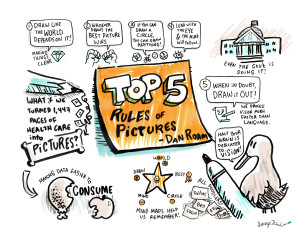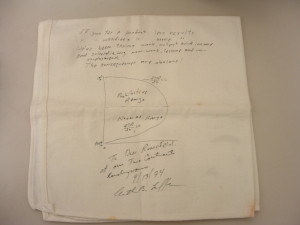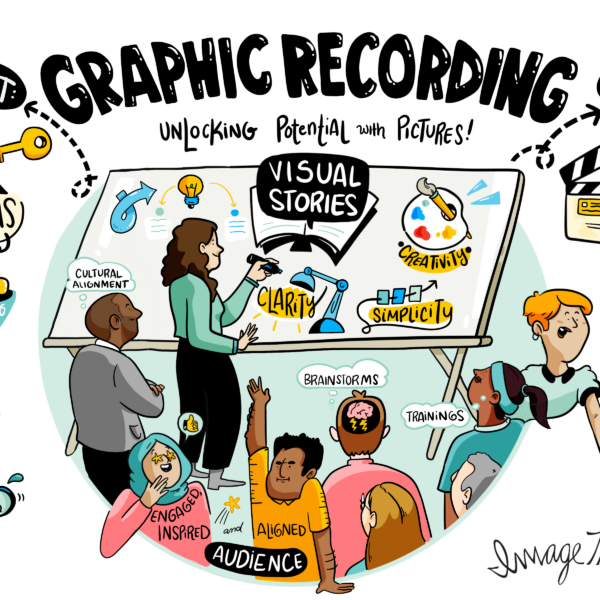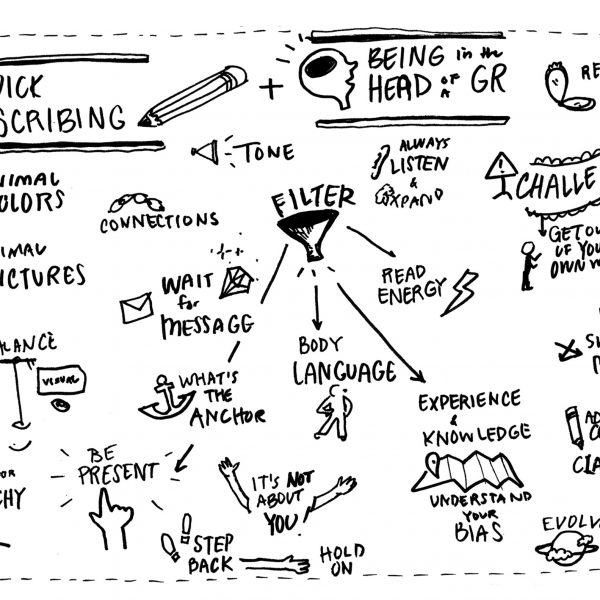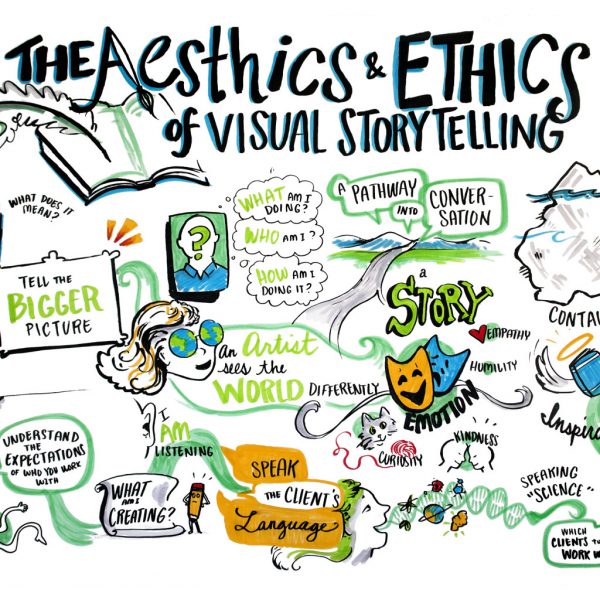If you doodle during a meeting or in class, you’re in good historic company. From DaVinci to Edison to Freud to Jobs, some of the world’s most innovative minds have resorted to quick sketches, diagrams, and visual notes when working out new, world-changing ideas.
As the final speaker at this year’s IFVP, Dan Roam explained why this is true. The author of The Back of the Napkin and Blah, Blah, Blah: What to Do When Words Don’t Work, and Show and Tell, Roam is an expert in pictures as a tool for communication, ideation, and education. He is a firm believer in the power of sketching and doodling to profoundly enhance people’s ability to think clearly, remember better, and connect with others more effectively. And he practices what he preaches: recently he translated a 1,447-page health care reform bill into 47 easy-to-understand doodles, proving that simple stick figures can help explain even the densest of documents.
Doodling as he talked, Roam told a rapt audience his Top Five Rules of Pictures:
1) Draw Like The World Depends On It…
Because it does! Communicating through images is a hallmark of human society, dating from the 17,300 year old cave paintings of Lascaux, through medical journals of the 19th century, and the political cartoons of today’s New Yorker magazine. Images help to clarify ideas and communicate across the linguistic divide, and can describe not only a medical condition or scientific principle, but create emotional resonance as well.
2) Whoever Draws The Best Picture Wins
In 1974, Arthur Laffer sat discussing economics with Dick Cheney and Donald Rumsfeld over beers. On the back of his napkin, he jotted down a quick diagram to illustrate his belief that simply increasing tax rates will not result in increased revenue for the government. This simple drawing was passed from Cheney and Rumsfeld to President Ford, and eventually formed the basis of Reaganomics. Whatever you think of Supply Side Economics, it’s clear that pictures are a powerful rhetoric tool!
3) If You Can Draw a Circle, You Can Draw Anything
Many are intimidated by drawing. But a simple circle can form the basis of a face, a globe, and if you combine it was a triangle and a few lines, even a bicycle!
4) Lead With The Eye and The Mind Will Follow
Nearly half of our brain is dedicated to processing visual information. It should therefore go without saying that by couching information in visuals, you stand to hold people’s attention for much longer.
5) When In Doubt, Draw It Out!
If simple drawings could help Roam make sense of a massive governmental document, it can certainly help you brainstorm your business strategy, your daily agenda, or your next big idea. Just pick up a pen and start doodling!
